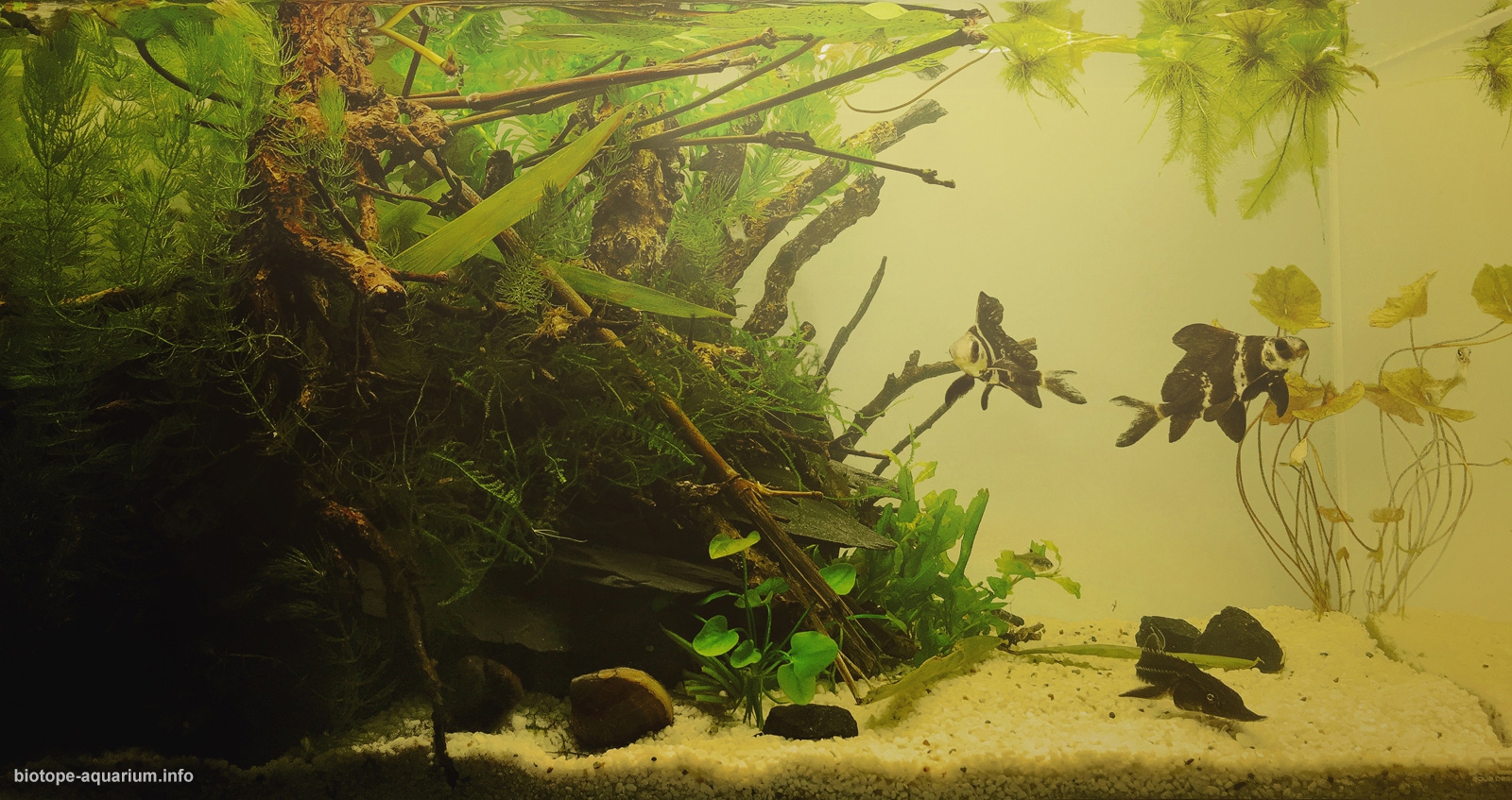Upstream of Yangtze river between province of Sichuan and Hubei, China
121st place in Biotope Aquarium Design Contest 2018
![]() Taiwan. William Chang
Taiwan. William Chang

Volume: 65 L
Dimensions: 20x30x36 cm
List of fishes: Myxocyprinus asiaticus, Acipenser sinensis, Rhodeus ocellatus, Leptobotia elongata, Anemina arcaeformis
List of plants: Ceratophyllum demersum, Egeria densa, Potamogeton wrightii, Nymphoides aquatica, Nymphaea sp.
Description of decorations: This biotope set-up designed to resemble a flowing river with a substrate of slate-stones in layers and white sand, some variably-sized rocks and a couple of bamboo、driftwood branches.
Description of equipment: Gex corner Power filter F2(3.5L/min), T8, NEC 20W FL20SSEX-D/18-HGx2.
Water parameters: pH 7.5, GH 4, KH 3, TDS 95, temperature 26°C.
INFORMATION ABOUT BIOTOPE
Description of the area surrounding the biotope: The Yangtze River (Changjiang) with approximately 6,380 km long, is the longest river in China and 3th in the world (after the Amazon and the Nile). It goes from the western part of China (Tanggula Mountains in Tibet ) flows through 10 provinces in to East China Sea. The Yangtze River flows through a wide array of ecosystems and is habitat to several endemic and endangered species. So far 416 fish species are known from the Yangtze basin, Many are only found in some upstream area. The upper course of the Yangtze stretches for about 1,010 km between the cities of Yibin in Sichuan province and Yichang in Hubei province. The climate is characterized by hot summers and relatively mild winters, as the high mountains to the west protect the region from the cold north and west winds. Annual precipitation measures between 40 and 60 inches (1,000 to 1,500 mm), a large part of it occurring in summer; the growing season lasts for more than six months.
Description of the underwater landscape of the biotope: In this area there are slate-stones and rocky regions with white sand.
Description of the parameters of the habitat: Water quality in the upstream of Yangtze River were pH 7.3-8.5, the conductivity between 250-450µS/cm and temperatures from 14.5-28.7°C.The oxidation reduction potential (ORP) of the water varies from −77.1 to −134.2 mv with an average of −88.8 mv, indicating an anoxic water surface.
List of fishes and invertebrates occurring in the nature biotope: Carassius auratus, Pelteobagrus fulvidraco, Coreius heterodon, Myxocyprinus asiaticus, Acipenser sinensis, Acheilognathus barbatulus, Bangana rendahli, Euchiloglanis kishinouyei, Leptobotia elongata, Megalobrama amblycephala, Alligator sinensis.
List of plants found in the nature biotope: Ceratophyllum demersum, C. oryzetorum, Hydrilla verticillata, Vallisneria natans, Ottelia alismoides, Nymphoided peltata, Nymphoides indica, Myriophyllum spicatum, M. verticillatum, Potamogeton cristatus, P. lucens, P. maackianus, P. malaianus.
Sources of information:
Gao, Z., Y. Li and W. Wang, 2008 – Environmental Biology of Fishes 83(3): 345-346
Threatened fishes of the world: Myxocyprinus asiaticus Bleeker 1864 (Catostomidae).
Liu, J., J. Chen, Z. Yu and L. Liu, 1995 – Asian Fisheries Science 8: 223-227
Controlled Reproduction and Broodstock Rearing of the Chinese Sucker Myxocyprinus asiaticus.
Koga, James S. Chinese high fin banded shark, Cal Poly Pomona, September 2003. Retrieved on 21 August 2007
Froese, Rainer and Pauly, Daniel, eds. (2013). “Myxocyprinus asiaticus” in FishBase. May 2013 version
http://www.aquapress-bleher.
https://www.fishbase.de/
https://link.springer.com/
Comments of the members of the jury of Biotope Aquarium Design Contest 2018

For me this is not an acceptable way to keep fishes. If this is a permanent setup, this is just cruel. These fishes become bigger than the tank in nature.
